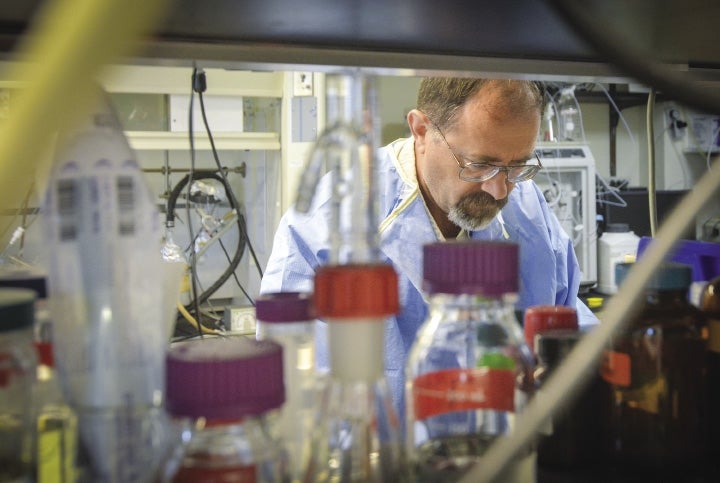Venture Capital money continued to flow into Massachusetts’s biopharma sector in 2022. The $8.72 billion in funding made it the second highest calendar year for biopharma companies, according to the 2022 Massachusetts Biopharma Funding Report from The Massachusetts Biotechnology Council, which was released Thursday. The only year with a higher total of VC funding was 2021, which saw more than $13 billion.
While this is the most diverse year on record for areas receiving funding, and the most MassBio has seen outside of Cambridge, which usually receives more than 50% of all VC money. According to MassBio, 51% of the companies receiving VC money in 2022 were located outside of Cambridge, which is a 9-percentage point increase over the previous year.
Central Massachusetts still lags behind the Greater Boston area in investment. The region received less than 2% of VC funding in 2022. Companies in Framingham and Natick were the two Central Massachusetts communities receiving significant investments. Framingham companies received $91.5 million in funding while Natick firms took in $80.88 million.
Greater Worcester is a prime example of a place that should be an incubator of biopharma startups but isn’t getting the funding it needs to do that, said MassBio CEO and President Kendalle Burlin O’Connell.
“Worcester has the ingredients to be a life science cluster,” O’Connell said in an interview with Worcester Business Journal on Thursday.
Worcester has been distinguished by MassBio as a platinum BioReady community, which means it is one of the most welcoming communities for biopharma companies to operate and expand in. Citing the city’s colleges and universities, the Commuter Rail train to Boston, and the city’s growing investment in housing, O’Connell said the city has what is needed to become an incubator, but it’s still missing one key component: lab space.
If Worcester invests in space for companies to scale and grow, then the city would begin to receive more of the VC capital that flows into Cambridge and Boston, she said.
Another reason for a shortage of funding in Central Massachusetts is some communities like Marlborough have a strong biopharma industry with established companies like Cytvia, she said. Venture capitalists don’t often invest in companies because they’re well established and don’t need an influx of cash to get off the ground, and those firms don’t want to give away ownership shares in the company.
The major changes in VC funding, according to the report, came in how money was invested. Venture capital firms thinned out how much they spent but spread it out among more companies. The average round of investment shrank from $53 million in 2021 to $35.3 million in 2022, but went to 246 companies in 273 rounds of funding, compared to 236 companies in 253 rounds for 2021
One trend that slowed in 2022 was the number of mergers and acquisitions. The number of companies acquired dropped from 34 in 2021 to 26 in 2022, which is also less than 2020’s number of 28.
The total value of those mergers decreased significantly from $63.86 billion in 2021 to $5.9 billion last year. O’Connell said this shows investors have an interest in fueling the biopharma economy and funding new research and companies, but they’re becoming more cautious with where they spend their money.
“Good companies will continue to get funded,” O’Connell said. “But companies will have to prove to investors [that they’re worth it] with good clinical data.”

